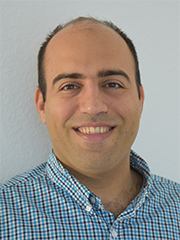| Research Mission: |
The Computation, Appearance and Manufacturing group focuses on inventing
new computational tools that release the full potential of advanced
manufacturing processes, such as additive manufacturing (also known as 3D printing). With the immense growth of the manufacturing hardware in
resolution, scale and speed, the algorithm complexity increases even more dramatically. We therefore aim at developing hardware-aware, scalable algorithms for advanced manufacturing.
The group has a particular interest in visual appearance of objects and
strives for better algorithms that help creating products with novel and
useful appearance characteristics using advanced manufacturing tools.
For many products, their appearance is as important as their functional goal, sometimes their sole function. In our group, we focus on developing appearance reproduction workflows for a variety of
hardware and processes.
In case of multi-material 3D printers, given a physical object, we try to find an efficient and accurate mapping from its appearance to the digital arrangement of printer's materials, such that the printed copy is as perceptually close as possible to the original one. The results of this research will immediately enable numerous applications in rapid
prototyping and manufacturing of end-use products. This spans several
application domains from medical devices and surgical training, to
cultural heritage preservation and anti-counterfeiting.
A particular interesting application for appearance fabrication, also a
focus of our group, is fine art reproduction. Fine art objects are
instruments for aesthetic contemplation as well as social scientific
studies. Fine art artifacts are exposed to different dangers, such as
aging and destruction even though they already incur huge costs to museums for conserving them. It is essential that we learn to preserve this heritage for ourselves and future generations. We take fine art as a primary case study for our research on appearance reproduction. Beside the importance for cultural heritage preservation, work of art is an ideal case study since all elements of appearance are present: 3D texture, spectral color, gloss and translucency. In our group, we pursue the simultaneous modeling and replicating of these appearance attributes -- a complex, unsolved problem. |




